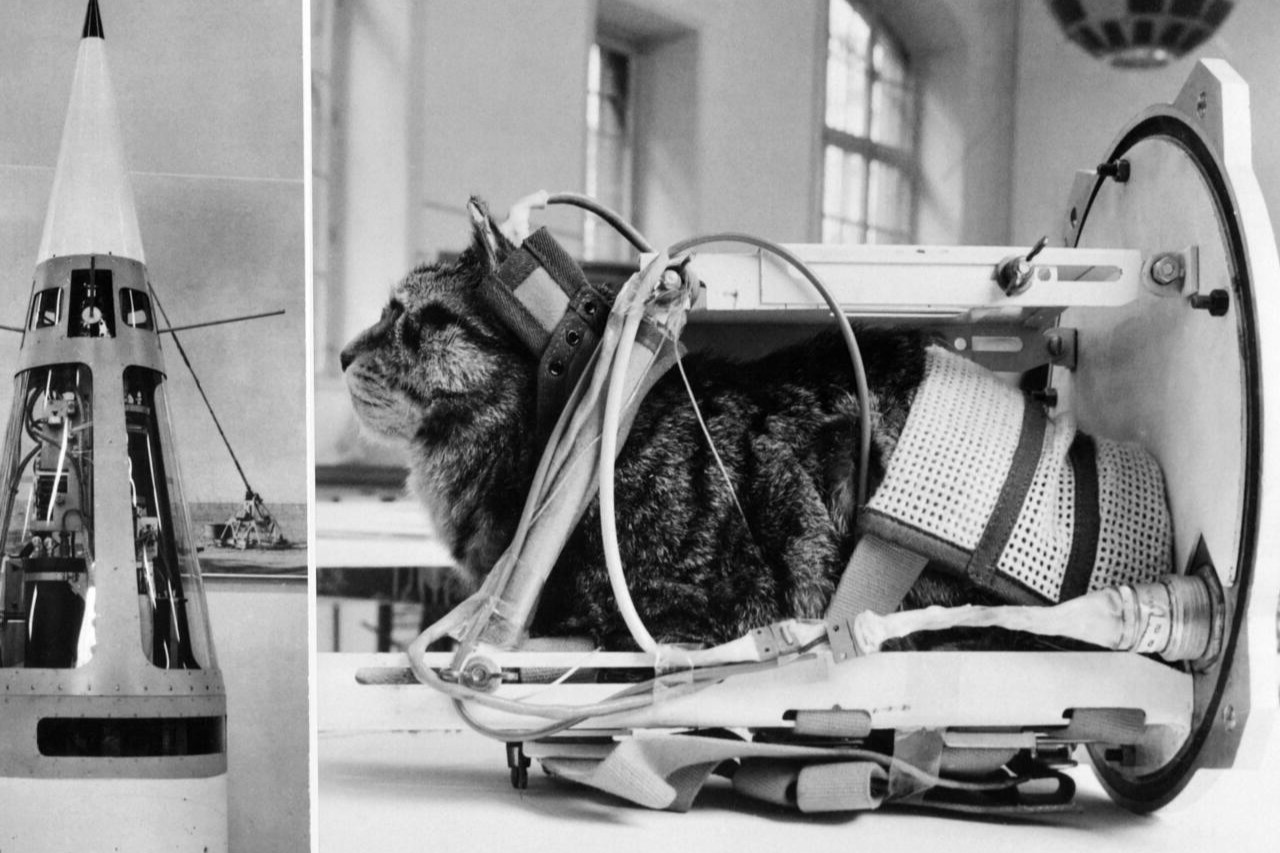
Who was Felicette? Felicette, a stray cat from Paris, became the first and only feline to travel to space. In 1963, she was chosen by French scientists for a space mission. Unlike other animals sent to space, Felicette's journey was brief but groundbreaking. She experienced weightlessness and provided valuable data before safely returning to Earth. Her mission helped advance human space exploration. Despite her significant contribution, Felicette's story remained relatively unknown for years. Today, she is celebrated as a pioneer in space history. Ready to learn more about this extraordinary cat? Let's dive into 40 fascinating facts about Felicette!
Key Takeaways:
- Felicette, the first cat in space, paved the way for human space travel and inspired a bronze statue at the International Space University in France.
- Despite her sacrifice, Felicette's mission provided valuable insights into the effects of space travel on living organisms, leaving a lasting impact on space exploration and animal studies.
Felicette: The First Cat in Space
Felicette holds a unique place in history as the first and only cat to travel to space. Her journey was part of a series of space missions conducted by France in the 1960s. Here are some fascinating facts about this pioneering feline.
- Felicette was a stray cat found on the streets of Paris.
- She was chosen from a group of 14 cats trained for space travel.
- Her mission was part of France's space program, which aimed to study the effects of space travel on living organisms.
- Felicette's mission took place on October 18, 1963.
- The rocket that carried her was called Veronique AG1.
- She was equipped with electrodes implanted in her brain to monitor neurological activity.
- Felicette's flight lasted approximately 15 minutes.
- She reached an altitude of about 156 kilometers (97 miles).
- The mission was a suborbital flight, meaning the rocket did not complete an orbit around Earth.
- Felicette experienced about 5 minutes of weightlessness during the flight.
Training and Preparation
Before her historic flight, Felicette underwent extensive training and preparation. This included various tests and simulations to ensure she could handle the stresses of space travel.
- The training included exposure to high G-forces in a centrifuge.
- Felicette was also subjected to confinement in small capsules to simulate the conditions of space travel.
- She was trained to remain calm and still during the flight.
- The electrodes implanted in her brain were used to monitor her neurological responses to stress and weightlessness.
- Felicette's training lasted several months before the actual mission.
The Mission's Impact
Felicette's mission provided valuable data that contributed to the understanding of the effects of space travel on living organisms. This information was crucial for the development of future manned space missions.
- The data collected from Felicette's mission helped scientists understand how the brain responds to weightlessness.
- Her mission demonstrated that animals could survive and function in space, paving the way for human space travel.
- Felicette's flight was part of a series of biological experiments conducted by France's space program.
- The success of her mission boosted France's reputation in the international space community.
- Felicette's mission is often compared to those of other space animals, such as Laika the dog and Ham the chimpanzee.
Legacy and Recognition
Despite her significant contribution to space exploration, Felicette's story remained relatively unknown for many years. However, recent efforts have been made to recognize her achievements and honor her legacy.
- In 2019, a bronze statue of Felicette was unveiled at the International Space University in Strasbourg, France.
- The statue was funded through a successful crowdfunding campaign.
- Felicette's story has been featured in various documentaries and articles about space exploration.
- She is often referred to as "the first cat in space" in popular culture.
- Felicette's mission has inspired many space enthusiasts and animal lovers alike.
Interesting Tidbits
Felicette's journey to space is filled with interesting and lesser-known facts that highlight the unique nature of her mission.
- Felicette was originally named "C 341" before being renamed after her mission.
- She was chosen for the mission because of her calm demeanor and small size.
- Felicette's mission was initially overshadowed by other space missions involving animals.
- The electrodes implanted in her brain were a pioneering technology at the time.
- Felicette's mission was one of the few space missions involving cats.
The Aftermath
After her historic flight, Felicette's life took a different turn. Her mission had a lasting impact on space research and animal studies.
- Felicette was euthanized a few months after her mission to allow scientists to study the effects of space travel on her brain.
- Her sacrifice provided valuable insights into the neurological impacts of space travel.
- Felicette's mission remains a significant milestone in the history of space exploration.
- Her story has been preserved in various scientific publications and records.
- Felicette's mission is often cited in discussions about the ethical treatment of animals in scientific research.
Felicette in Popular Culture
Felicette's unique story has captured the imagination of many, leading to her inclusion in various forms of media and popular culture.
- Felicette has been featured in several books about space exploration.
- Her story has inspired artwork and illustrations by space enthusiasts.
- Felicette's mission has been referenced in television shows and movies about space travel.
- She has become a symbol of the early days of space exploration.
- Felicette's legacy continues to inspire future generations of scientists and space explorers.
Felicette's Legacy Lives On
Felicette, the first cat in space, left a lasting mark on history. Her journey wasn't just a scientific milestone but a testament to the bravery of animals in space exploration. Unlike other space animals, Felicette's story often gets overlooked. However, her contribution to space science is undeniable. She helped scientists understand how living beings react to space conditions, paving the way for future missions.
Her legacy continues to inspire. In 2019, a statue was erected in her honor at the International Space University in France. This recognition ensures that Felicette's bravery won't be forgotten. Her story reminds us of the countless animals who played crucial roles in scientific advancements. Next time you think about space exploration, remember Felicette, the courageous cat who reached for the stars and made history.
Frequently Asked Questions
Was this page helpful?
Our commitment to delivering trustworthy and engaging content is at the heart of what we do. Each fact on our site is contributed by real users like you, bringing a wealth of diverse insights and information. To ensure the highest standards of accuracy and reliability, our dedicated editors meticulously review each submission. This process guarantees that the facts we share are not only fascinating but also credible. Trust in our commitment to quality and authenticity as you explore and learn with us.


